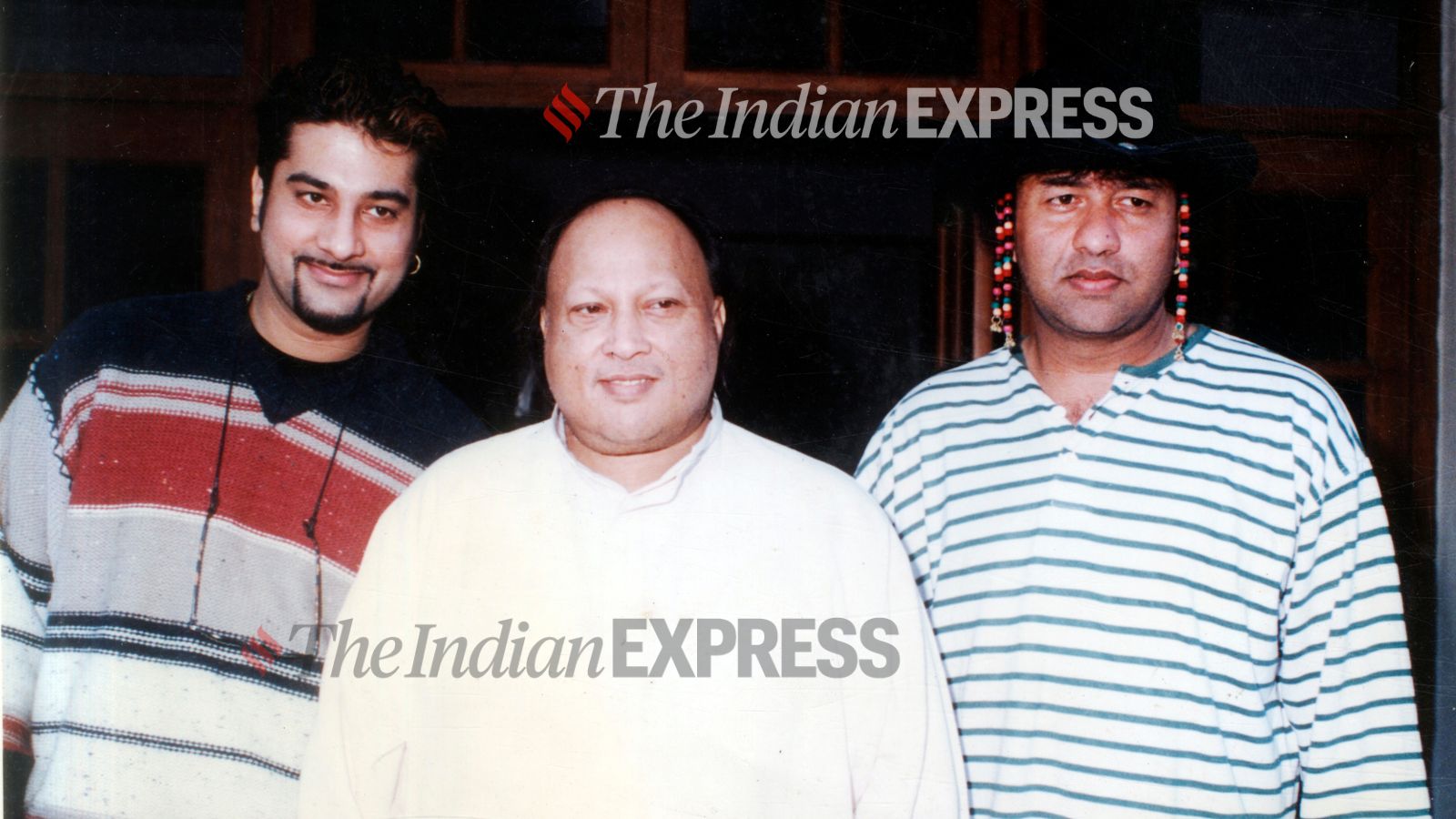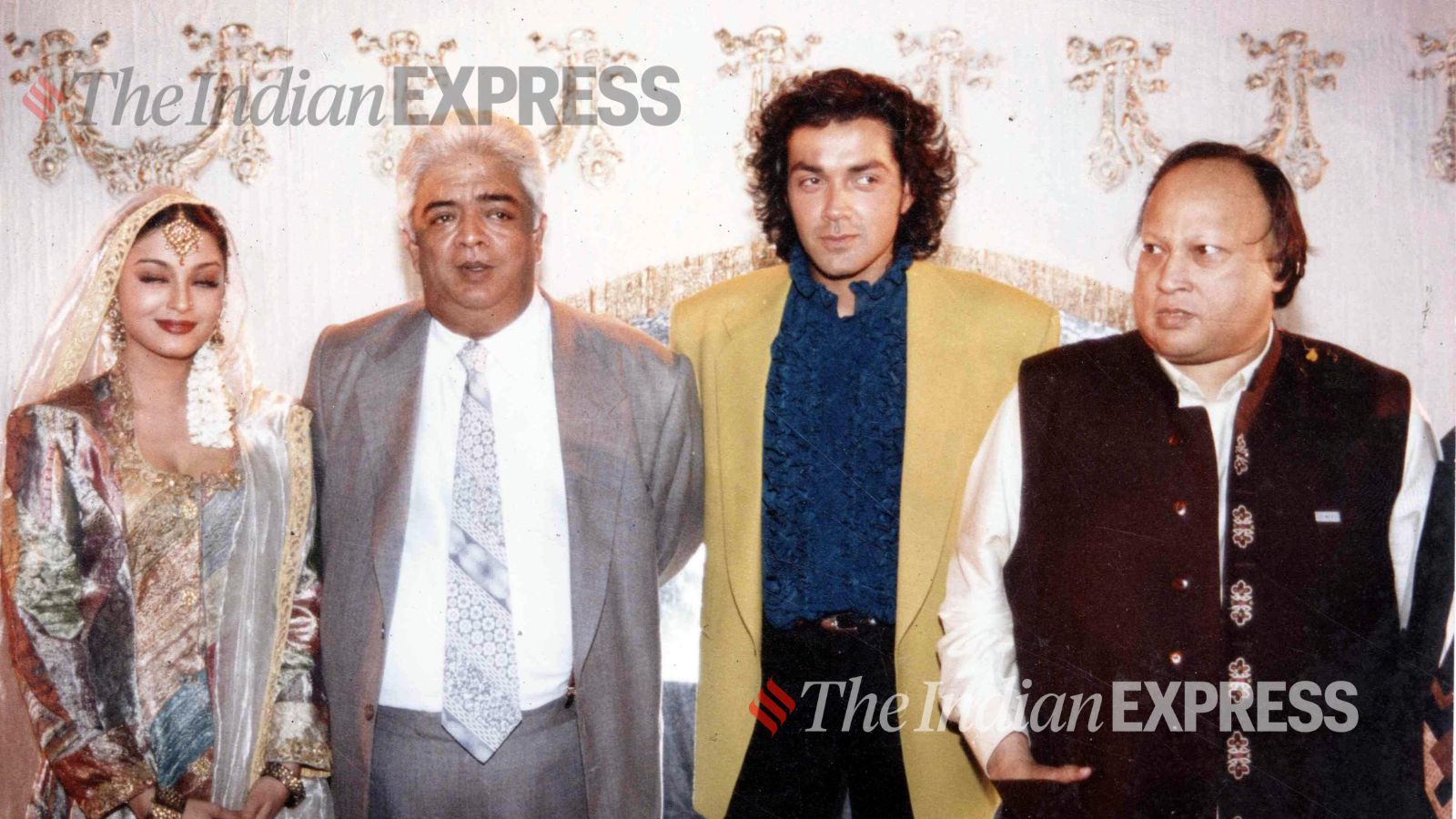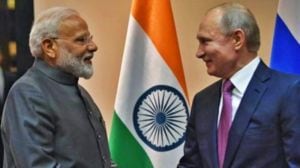Qawwali’s charm transcends age. It never fails to transport its listeners to an other-worldly realm, where just the deep voice of the throaty singer, his crew, and their rhythm remains. Somewhere between the claps and the tabla beats, you’d think you have met God. And for many who witnessed the world’s greatest qawwal perform, Ustad Nusrat Fateh Ali Khan was Shahenshah-e-Qawwali (the Emperor of Qawwali).
American singer Jeff Buckley, who earned a cult following in the ‘90s, called him his “Elvis”. “I idolise Nusrat. He’s a god, too.”

Khan collected many monikers across the world. In Japan, he was the “Singing Buddha.” In London, “The Spirit of Islam.” In Los Angeles, “The Voice of Paradise.”
With the rise of the internet, fans gave him a new title: “NFAK.” On early online forums dating back to 1995, users shortened his name for speed and efficiency. Some added the ‘Ustad’ to make it “UNFAK”. Nearly three decades later, the acronym endures, with subreddits and Instagram accounts dedicated to NFAK. And their followers? Gen Z.
 Santoor player Pandit Shiv Kumar Sharma, Nusrat Fateh Ali Khan and Javed Akhtar. (Express Archives)
Santoor player Pandit Shiv Kumar Sharma, Nusrat Fateh Ali Khan and Javed Akhtar. (Express Archives)In 2024, during the launch of Spotify ICON Pakistan, an initiative to connect younger generations with classics, the music streaming platform revealed that Gen Z made up almost 60 per cent of NFAK’s current listeners. He had amassed more than 800 million streams worldwide.
NFAK’s enduring charm
A generation born after Khan’s passing grew up listening to his qawwalis on their parents’ cassettes and CDs, then on MP3 players and YouTube. Today, clips of his performances — from ‘Mere Rashke Qamar’ to ‘Tumhein Dillagi Bhool Jaani Padegi’ — surface on Instagram and Twitter feeds during late-night scrolls. Reddit threads dissect his most beloved compositions.
Young vocalists attempt covers on YouTube. Among these, Portuguese musician and YouTuber Andre Antunes has gained fame remixing NFAK’s work with modern, western instruments. His video, “Legendary Pakistani Singer goes Metal,” a remix of ‘Sanson Ki Mala Pe’, has garnered over 20 million views.
Then there’s Gen Z’s own qawwal genius, Rahat Fateh Ali Khan, who is keeping his uncle NFAK’s legacy alive. Rahat has emerged as an icon in his own right, becoming one of Pakistan’s highest-paid musicians and a resident playback singer of the Indian film industry.
Story continues below this ad
One of his most celebrated performances includes a reprisal of NFAK’s ‘Afreen Afreen’ for Pakistan’s Coke Studio (season nine), for which Rahat collaborated with Momina Mustehsan. The 2016 studio version is one of the most popular Pakistani songs. After nine years, the YouTube video has crossed 600 million views. The song’s charm lies in its brilliant composition, right from the lyrics to the accompanying beats. The singer sings praises of “the creator” for making such a beauty as his beloved. The lyrics speak of the spiritual aura exuded by the physical attributes of the body. The jism is at once like sculptures in Ajanta caves and the “sweet-smelling moon-light” or the “first ray of the Sun”. The chehra (face) is both like a fresh flower and a dream. Rahat’s soulful voice completes this journey from the physical to the spiritual realm.
But 20 years ago, the nazm, written by Javed Akhtar, had propelled NFAK into the forefront of Sufipop, a vast genre where the traditional sound meets modern music. The song expanded the scope of qawwali — though Afreen Afreen isn’t technically one — adding a synthesiser to the mix. And the music video, starring Lisa Ray, with its visuals and sophisticated editing, made it a fusion spectacle. “This audible and visible use of technology gives the song a hip, cosmopolitan appeal, not unlike the rest of Nusrat Fateh Ali Khan’s collaborations and Indipop music videos of the 1990s,” writes author Pavitra Sundar in her book, Listening with a Feminist Ear.
 Nusrat Fateh Ali Khan with British-India producer, Bally Sagoo, and musician Anu Malik (Express Archives)
Nusrat Fateh Ali Khan with British-India producer, Bally Sagoo, and musician Anu Malik (Express Archives)NFAK as a pop star
Though today Khan’s initials circulate across digital spaces much like any modern pop star’s moniker, he has always been a pop-cultural icon. For all his roots in a 600-year-old qawwali lineage, even at his peak, he was more than a traditionalist.
NFAK emerged onto the Pakistani music scene in the 1960s, becoming an instant sensation. But barely anyone outside of South Asia had heard of Khan when he performed his first international gig at the World of Music, Arts and Dance (WOMAD) festival in London in 1985. That appearance catapulted both Khan and qawwali onto the global stage, marking the start of a years-long international career filled with collaborations and performances around the world.
Story continues below this ad
Watch Nusrat Fateh Ali Khan perform live at WOMAD 1988:
In 1988, he collaborated with Peter Gabriel, WOMAD’s co-founder, for the soundtrack of Martin Scorsese’s drama film, The Last Temptation of Christ. He was then signed to Gabriel’s Real World label.
With Real World, NFAK released a bunch of traditional qawwali albums. But in true pop star fashion, it was his more experimental, genre-blending work that brought him to the top of music charts.
In 1990, he released his album Mustt Mustt in collaboration with guitarist Michael Brook, blending modern instruments like synthesisers, electric guitar, and bass with the harmonium and tabla. A remix version of the title track, by trip hop group Massive Attack, fused qawwali with Bristol dub music, and had British clubs dancing to the Urdu language. The song even featured in a popular Coca-Cola ad.
Their second collaboration, Night Song, was the No.4 hit on the Billboard Top World Music Albums in February 1996. NFAK also teamed up with Pearl Jam’s lead singer, Eddie Vedder, on two songs for the soundtrack to Dead Man Walking.
Story continues below this ad
In the late 90s, NFAK began a love affair with Bollywood, collaborating with music giants like Akhtar and A R Rahman.

Actress Aishwarya Rai, director Rahul Rawail, actor Bobby Deol and Nusrat Fateh Ali Khan on the set of film Aur Pyar Ho Gaya (Express Archive)It’s not that Bollywood had not imbibed qawwali into its soundtrack before. We had several hit ‘filmi qawwalis’ like Madhubala’s Anarkali singing ‘Teri Mehfil Mein Kismat’ for Salim, or Rishi Kapoor wooing his love interest in Amar Akbar Anthony with ‘Pardah Hai Pardah’. These transformed qawwali from a religious experience to an avenue to express romantic passions. But NFAK breathed new life into the genre and left his imprint on future music. His songs for Bollywood films, such as ‘Saya Bhi Saath Jab Chhod Jaye’ (featured in Dillagi) and ‘Dulhe Ka Sehra’ (Dhadkan), were even released posthumously.
One of the last songs he sang before his death at forty-eight in 1997 was for Rahman’s Vande Mataram album. Today, as a generation navigates the disquiet of shifting powers, distant wars, economic precarity, and the eternal weight of human frailty, NFAK’s words may offer a compass: “Ishq hai jo saare jahaan ko aman bhi de. Ronaq ishq se hai saare aalam ki (Love can shepherd the world toward peace, love is the light of life).”



 Santoor player Pandit Shiv Kumar Sharma, Nusrat Fateh Ali Khan and Javed Akhtar. (Express Archives)
Santoor player Pandit Shiv Kumar Sharma, Nusrat Fateh Ali Khan and Javed Akhtar. (Express Archives) Nusrat Fateh Ali Khan with British-India producer, Bally Sagoo, and musician Anu Malik (Express Archives)
Nusrat Fateh Ali Khan with British-India producer, Bally Sagoo, and musician Anu Malik (Express Archives)






























